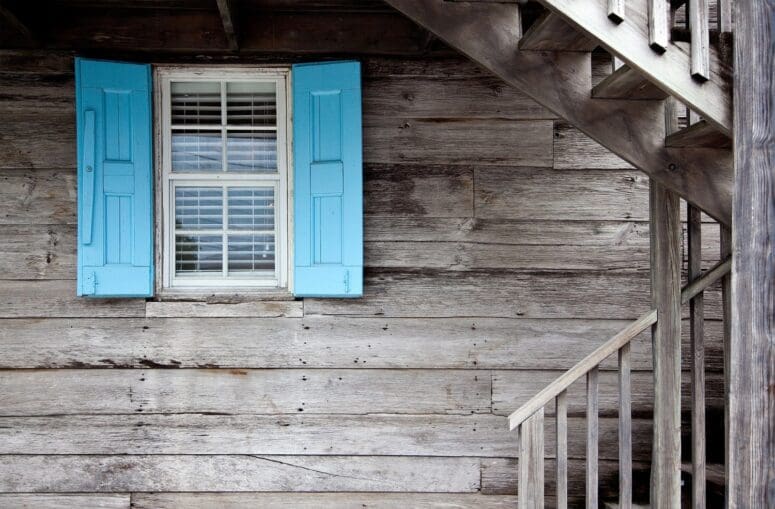Walking Through the Home Inspection Process: What’s Going on Inside Your House?
- Published on
- 5 min read
-
 Catrina Sun-Tan Contributing AuthorClose
Catrina Sun-Tan Contributing AuthorClose Catrina Sun-Tan Contributing Author
Catrina Sun-Tan Contributing AuthorCatrina is a native San Franciscan with a B.A. in Psychology and minor in Cinema and Media Studies from Wellesley College. A storyteller at heart, she loves to write about people, films, and of course, real estate. Don't be surprised if you catch her browsing luxury homes on Instagram or obsessing over the latest market trends.
95% of purchased homes go through an inspection before closing, but that doesn’t make the home inspection process any less of a mystery for sellers who aren’t usually invited to attend this appointment.
It’s natural to have concerns about what’s going on inside your house while you’re not there. But while you worry over whether the inspector will treat your house fairly, the buyer needs to know that the property they’ve agreed to purchase is in the type of condition they’re paying for.
To bring you out of the dark we asked home inspection experts to walk us through the process in detail. With their advice you’ll be able to sort through the things you can influence versus those you can’t control.

Day in the life of a home inspector: How does this process work?
Clipboard? Check. Pen? Check. The home inspector hops out of the car and surveys the surroundings.
Looking around the block, he notices that all the homes in the area use asphalt shingles for the roof, and every front lawn also has a driveway and garage.
This gives him a chance to survey the commonalities among these houses, like what materials are used for the homes in this neighborhood, and a general idea of how to inspect this one in particular.
He walks toward his assigned home, shakes the agent’s hand, and explains how he will start the home inspection process to the home buyer.
First, foundation. Are there any cracks, is it sinking, do the doors close properly? Then, he’ll climb on the roof to look for missing shingles, holes, and moldy spots. He’ll also flush all the toilets, turn on all the lights and fans, close and open all the doors, and test every fire alarm in the house. Slowly but surely he’ll make his way down the standard home inspection list.
According to Chad Hett, CEO of The Elite Group, one of the largest home inspection companies in the country that employs Certified Master Inspectors, home inspectors generally follow this order of operations as they review the entire house:
- Exterior and Grounds
- Roof
- Main Electrical panel
- Main Gas and water
- Pool/Spa (if present)
- Garage
- Laundry
- Water Heater
- Heater/AC
- Attic
- Interior
- Bedrooms
- Bathrooms
- Kitchen
With each item, explains Hett, inspectors try to answer three main questions:
- Are there any major functional defects (i.e. are systems and major appliances operating under normal conditions)?
- Are there any major material defects (i.e. holes in wall, damages or cracks with the fireplaces or foundation, sagging ceiling materials, signs of moisture intrusion)?
- Are there any health and safety concerns (i.e. missing smoke detectors, trip hazards, microbial growth or mold, loose stair railings)?
After three hours of knocking, climbing, and looking around your house, the home inspector walks the buyer and buyer’s agent through the home one last time to explain and summarize each issue that the inspection identified.
The final walkthrough “gives the client an opportunity to answer questions and visually see some of the items of concern,” says Hett.
But, communication doesn’t stop there! The buyer can call the home inspector after the inspection to discuss the report. Some inspectors also provide re-inspection services if clients want another opinion or a second-look after a repair.
That’s a lot to cover, so how long would a process like this take? “Inspections can take anywhere from 1 to 4 hours depending on the size of the structure or the age of the structure being inspected,” says Hett.
“The more defects there are to document, the longer the inspection will take.”
The type of home, its age, and square footage influence how the home inspectors carry out the procedure and cost. Cost varies in each region, but the national average comes in at $327 for a basic inspection of a 2,000 square foot home.
So what’s the bottom line? The home inspection process is a non-invasive visual examination of a house that identifies defects in its systems and components, which include plumbing, roofing, foundation, HVAC, interior and exterior of the home, and the electrical system.
Home inspectors won’t tear open the walls to look for mold or look inside your pipes for rust. Anything that’s hidden or covered by the ceiling, flooring, or the homeowner’s bulky belongings is off limits and they will not assume responsibility for anything they can’t see straight on.

How are the home inspection findings drafted and delivered?
Home inspectors thoroughly document their findings in a report that can range from 15 to 70 pages. The report includes general information about the house and its current condition, records the state of each system and component, and notes whether each issue identified affects the safety or core functioning of the home.
Each problem documented in the report comes with annotated pictures, a summary of the problem, and a rating that explains how functional it is or if it’s a safety concern.
Hett explains that whoever hired the home inspection receives the complete copy of the report. So, home buyers who pay for the inspection are typically the ones to receive the paperwork. However, if they request the sellers to carry out repairs, they are required to provide home inspection documents that support the need for the fix.
Buyers typically attend the inspection to sign paperwork with their real estate agent and ask questions or discuss the home inspection summaries with the inspector.
But know that you can’t technically pass or fail a home inspection. The inspection does, however, reopen the door for negotiations and give the opportunity for the buyer to void the contract if you can’t come to an agreement in the event of repair requests. Home inspectors give an unbiased look at the home to provide buyers with information that helps them with their ultimate decision.

Can the seller do anything to make the home inspection process go more smoothly?
1. Get a pre-listing inspection to identify issues and make repairs ahead of the game
One way to avoid surprise repairs that delay the sale of your home is to conduct a seller’s pre-listing inspection. A pre-inspection gives you a heads up on any issues that your house might have without the pressure of a buyer breathing down your neck.
Homer Tyre, a top agent and owner of Tyre Realty in Greenville, North Carolina, advises his sellers to avoid the emotional rollercoaster of a buyer’s inspection with a preemptive pre-inspection. He wants his sellers to “negotiate from a position of knowledge and strength” that pre-inspections can provide.
“Seller pre-inspections help you maintain control and take leverage away from the buyer,” says Tyre. “You can determine what you want to do and on your terms with the contractor of your choice.”
The buyer can’t blindside you with unforeseen repairs or inspections if you already know what’s going on with your house. But, remember, once you get a pre-inspection, you must disclose anything that’s wrong to the buyer. Commit to a pre-inspection only if you’re ready to invest in repairs.
Finally, make sure you hire a home inspector who comes highly recommended by your agent and who is also certified by an association, like ASHI or InterNACHI, which require the businesses to pass ethics and standards exams and perform a certain number of home inspections before certifications are issued.
No point in spending extra money on a pre-inspection if the inspector will miss things that come up in the buyer’s inspection later on.
2. Prep your house for the buyer’s inspection
Preparing for the inevitable buyer’s inspection can include anything from gathering all your home remodeling documents to scrubbing the bathtub.
First, set aside a day to conduct your own mini DIY home inspection, so you can fix up any simple cosmetic repairs before the actual inspection. This will also give you an idea of what you can or cannot do yourself if you find bigger messes or maintenance issues.
Then, remove your belongings that block any of the components that the inspector will evaluate. Pack up the gym equipment in the basement that sits in front of your water heater and clear the empty dish soap bottles under the sink.
While you’re at it, put on your apron and get down and dirty to clean open surfaces, cabinets, cobwebs, and stains. Switch out the lightbulbs, trim the shrubs, and change out the HVAC filters. This is a simple hack that will make your home look put together and maintained, which will leave the inspectors and buyers with a good impression of your home. And, on the day of, remember to send your kids to playdate or drop off your pets with a sitter, so that they don’t get in the way of the inspection.
These small preparations give you brownie points from the inspector, who won’t have to deal with writing up the small home maintenance issues. They also make the inspection process much smoother for you, the buyer, and the inspector.
3. Try to stay away during the buyer’s inspection, if possible
Schedule a haircut, wait patiently in a coffee shop, or run errands when the home inspector is in your house. Normally, the buyer and buyer’s agent are present during the inspection, but not always the seller. Hett says that you can arrange an appointment where the seller can participate, but advises to let the home inspector and buyer do a walkthrough of the house without you hovering around.
“Let’s be honest,” says Hett, “the home Inspector is going to find defects or problems and, as the seller, it is difficult to listen to someone tell your potential buyer about these defects or problems.”
Like surgery, explains Hett, parents wouldn’t stand over the doctor’s shoulder and watch them conduct the operation. “They’re focused and then afterward, they’ll let you know all the details.”
Inspections are similar, as inspectors are using their eyes, sense of smell, and hearing. With an overcrowded and over-concerned audience, they can miss something, have to circle back, forcing them to take longer than expected.
And, that’s the home inspection! Not so scary, right?
The home inspection process is fairly universal from house to house but the outcome will vary depending on your home’s size, age, and condition. We’ve covered a lot of ground here but couldn’t possibly account for every issue or snag that could arise during this step of the home sale.
So when in doubt, consult a top real estate agent about how to best prepare your house for the inspection, be on top of those things within your control, and manage your expectations from there.
